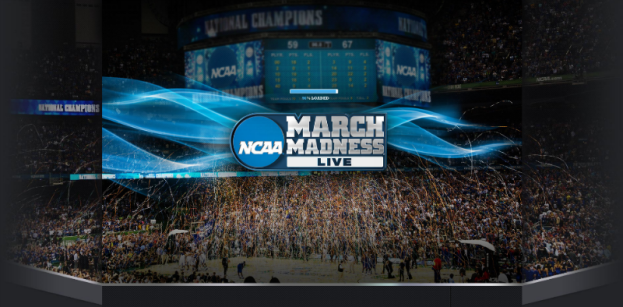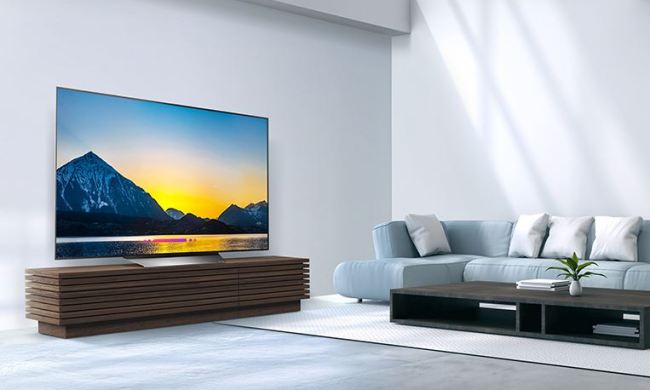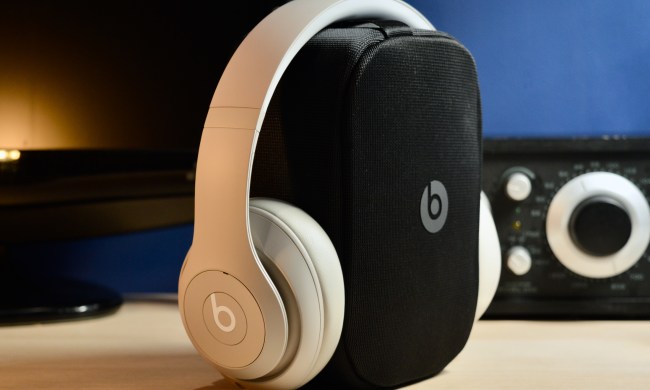 If you participate in a NCAA Tournament pool each year, you’ve probably spent many a work hour obsessively refreshing scores. TPS reports be damned! You have to keep your eye on potential bracket busters as games come down to the wire.
If you participate in a NCAA Tournament pool each year, you’ve probably spent many a work hour obsessively refreshing scores. TPS reports be damned! You have to keep your eye on potential bracket busters as games come down to the wire.
Thankfully, those days are done, as the NCAA’s March Madness Live website and associated iOS and Android apps now allow you to watch any game, anytime, anywhere, on any connected device capable of streaming video. And the best part of all is: It’s free! … sort of.
“Within 5 years I anticipate that more than half of our customers will be watching the majority of their video in over-the-top fashion.”
You may be wondering what the catch is, but truth be told, there really isn’t one. For sports fans, this kind of flexibility is becoming more and more common, as several sporting events have seen the light. The London Olympics, for instance, streamed every event at no additional cost (provided you were a cable subscriber), while the last two Super Bowls were available to stream, sub or no sub. Though “what took so long?” is certainly a valid question, if you’re a sports nut, you should count your blessings. Your part of a rarefied class of consumer that actually gets what they want out of TV.
All that said, while we’re grateful for the excitement this trend has added to the office pool (and sorry for the lost productivity), we still can’t help but wonder: When it comes to streaming live broadcast media on the Internet, why are sports fans so special?
In the past half century, we’ve seen networks launch legal assaults against any device or service that allows the consumer to change the way they access broadcast television; so why now? Why sports? And most importantly: Why not everything else?
Why Now?
In answering the inquiry above, let’s start with the fact that there are fewer answers to this question: Why not now? There’s no better time than the present to invest in streaming. Just ask Bill Kula, Verizon’s director of media relations. Back in December, he told DT the following: “Within 5 years I anticipate that more than half of our customers will be watching the majority of their video in over-the-top fashion.” That’s a strong enough statement on it’s own, but if you’re not convinced yet, consider that, in 2012, online video analytics outfit Ooyala found that video streaming to tablets and mobile phones increased 100 percent year on year.
Clearly, the market is trending in this direction.

Why Sports?
Quick quiz: Which national network charges the highest average monthly fee per subscriber? If you answered anything but ESPN, you weren’t even close. In January of 2012, its fee was $4.69, while the next highest, TNT, came in at $1.16. Since then, the Entertainment Sports Network has bumped it up even further, demanding over $5. At the risk of oversimplifying things, if you don’t watch ESPN, and you pay for cable, you’re getting ripped off.
On the other side of the coin, sports fans don’t have too much to be bent out of shape about. Sure they’re paying a nice chunk of change for sports programming, but they’re actually taking advantage of it, while the cost of the channels they don’t watch pales in comparison.
While it might seem strange that sports should garner such a premium, the reason they do is actually very simple: Sports programming is in demand. Of the 10 most-watched programs in U.S. TV history, eight are Superbowls; in 2011, nine of the 10 highest-rated television broadcasts were NFL programming; this year, NCAA March Madness Live generated a record-setting 36.6 million live streams in its first week of action. People want sports.
Demand, however, is only part of the equation.
Are sports more stream-able?
The short answer is yes. In sports, the primacy of the present leaves you with two ways to watch the game: live, or not at all. Unless you’re one of the seven people in America who doesn’t use a cell phone or social media, you’re going to have a hard time avoiding spoilers if you’ve DVR’d a game. If your team loses, you’ll see complaints smattered across your Facebook news feed. If you’re team triumphs, you’ll see tweets with hashtags like: #anothergreatwin, or, #Winthebooks – and that’s assuming that you even make it through the game without your friends texting you with updates you’re trying to avoid.
Most people have the good sense not to spoil a “Game of Thrones” episode, because they know that many of their friends, maybe even the majority, will be recording it and watching later. With sports, on the other hand, everyone assumes that you either watched the game, or you didn’t.
Given that reality, anywhere anytime streaming carries some extra incentive for sports fans – but that certainly doesn’t mean that others shouldn’t get in on the fun.
Why not everything else?
The networks have a formula, and they’re going to lather, rinse, and repeat until that formula is no longer viable.
But why shouldn’t they be psyched? If you can access your TV and DVR remotely and you can time-shift content to allow you to watch at your own convenience, doesn’t that mean more exposure for the networks’ content? After all, some viewers are making the decision between watching live on a mobile device, or not watching at all.
Sounds like sound logic to us, but there’s something else that’s keeping the networks grounded, something unspoken. Though they like to claim their objections are based on illegal rebroadcasting and copyrights and what have you, here’s what no network exec will tell you: They’re dragging their feet because theyr’e scared stiff. They’re the popular kid who runs their home town and their high school, but doesn’t want to go to college. Why risk trying your hand at something different when you’ve got a good thing going already?
The networks have a formula, and they’re going to lather, rinse, and repeat until that formula is no longer viable. That’s why they don’t want to stream content unless they are absolutely guaranteed eyeballs – and lots of them (i.e. the NCAA Tournament, the Super Bowl, and the Olympics). If not, streaming is just too much of a unknown entity. There are pitfalls they can’t anticipate yet and still others staring them in the face. For one, the industry hasn’t optimized the process of measuring streamers yet, and even if it does, ads could still be a tough sell, as it’s unclear whether they’ll resonate because it’s unclear whether or not people will pay any attention to them. Creating streaming protocols also means you have to create software, monitor and update content, and maybe even court a different set of advertisers than you’re used to.
These are all legitimate and perhaps prohibitive concerns. There’s just a lot that needs to happen before a network feels comfortable taking the plunge, and so there have been few that are willing to jump in.
Just look back at the history of TV if you want to understand the networks’ attitude. They’re about as welcome to change as that Uncle of yours who thinks the internet is just a fad – and DISH isn’t the only new kid on the block that has drawn their ire.
In 1977, Universal City Studios, Inc. sued Sony Corp. of America over the VCR; in 2007, a host of plaintiffs sued to stop Cable Vision Systems Corp. from introducing a network-
Final Thoughts
Though it does look like those controlling the content are beginning to see the writing on the wall, make no mistake about it, they won’t be exceeding a snail’s pace anytime soon. Contrary to popular belief, it’s not that they don’t want you to have what you want, it’s just that they want to be the ones that give it to you – and they want to profit from doing it. Problem is, that’s only going to work for so much longer. You can hear the collective voice of the consumer crying “hurry up already!”
The Chorus of sports fans has clearly resonated, but if others don’t break through soon, the networks may just get beaten at their own game.


